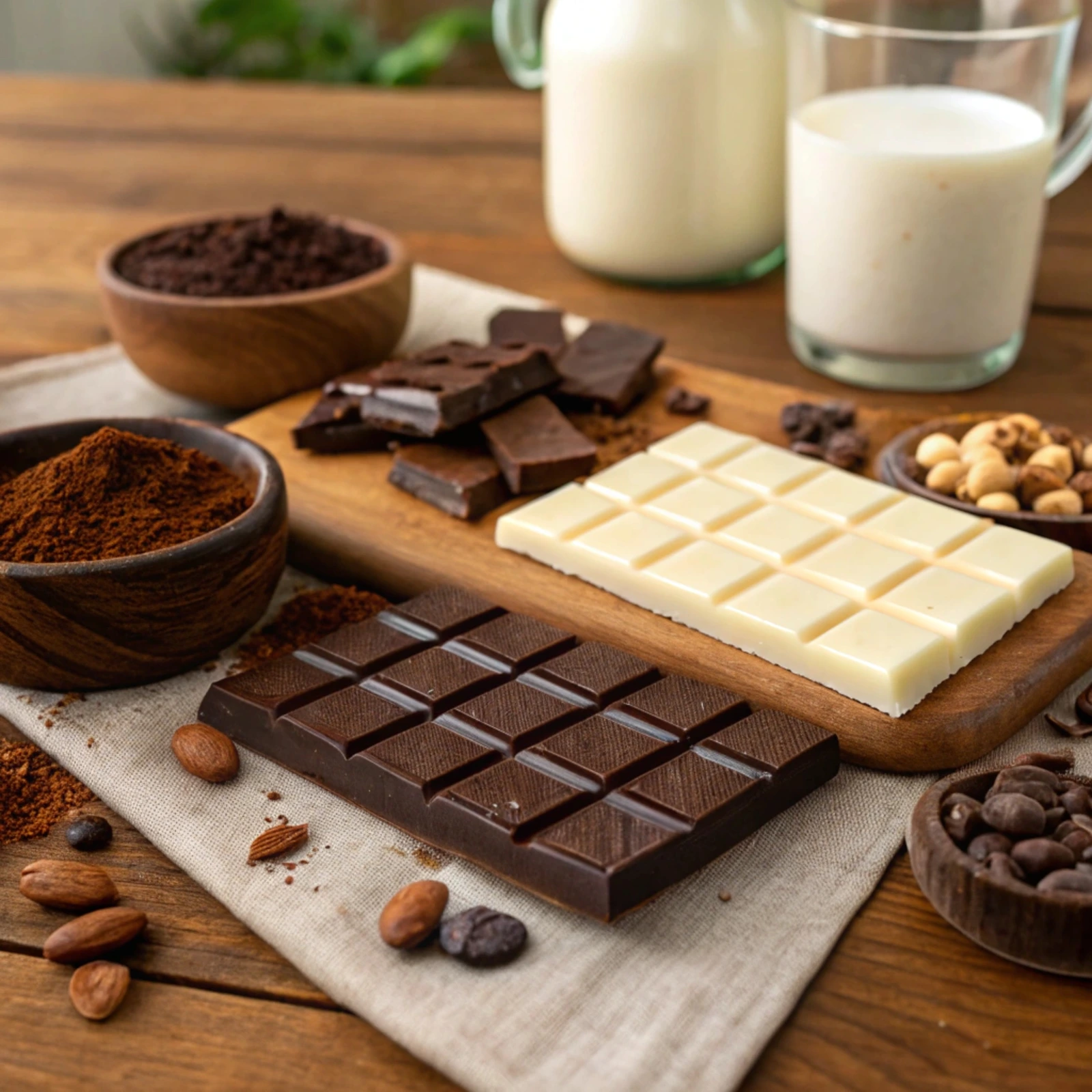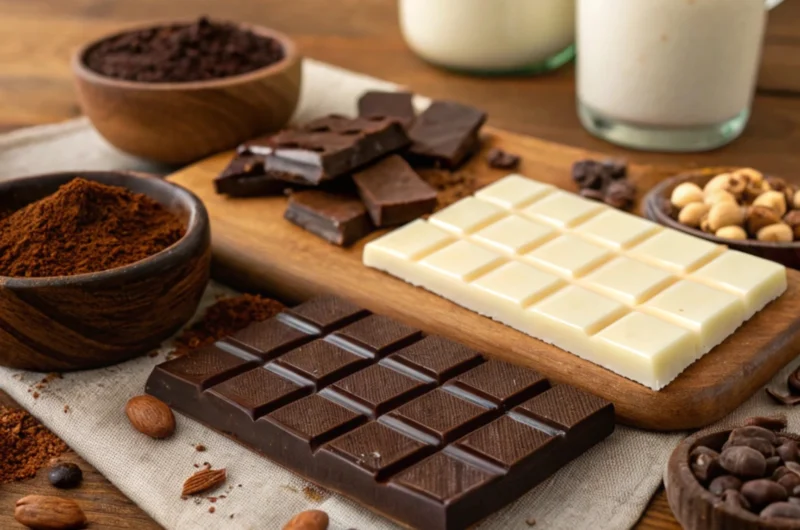Chocolate lovers, rejoice! You can indulge without dairy now. Dairy-free chocolate changes the game for many. It’s great for those who are lactose intolerant, vegan, or looking for healthier choices.
Jump to Recipe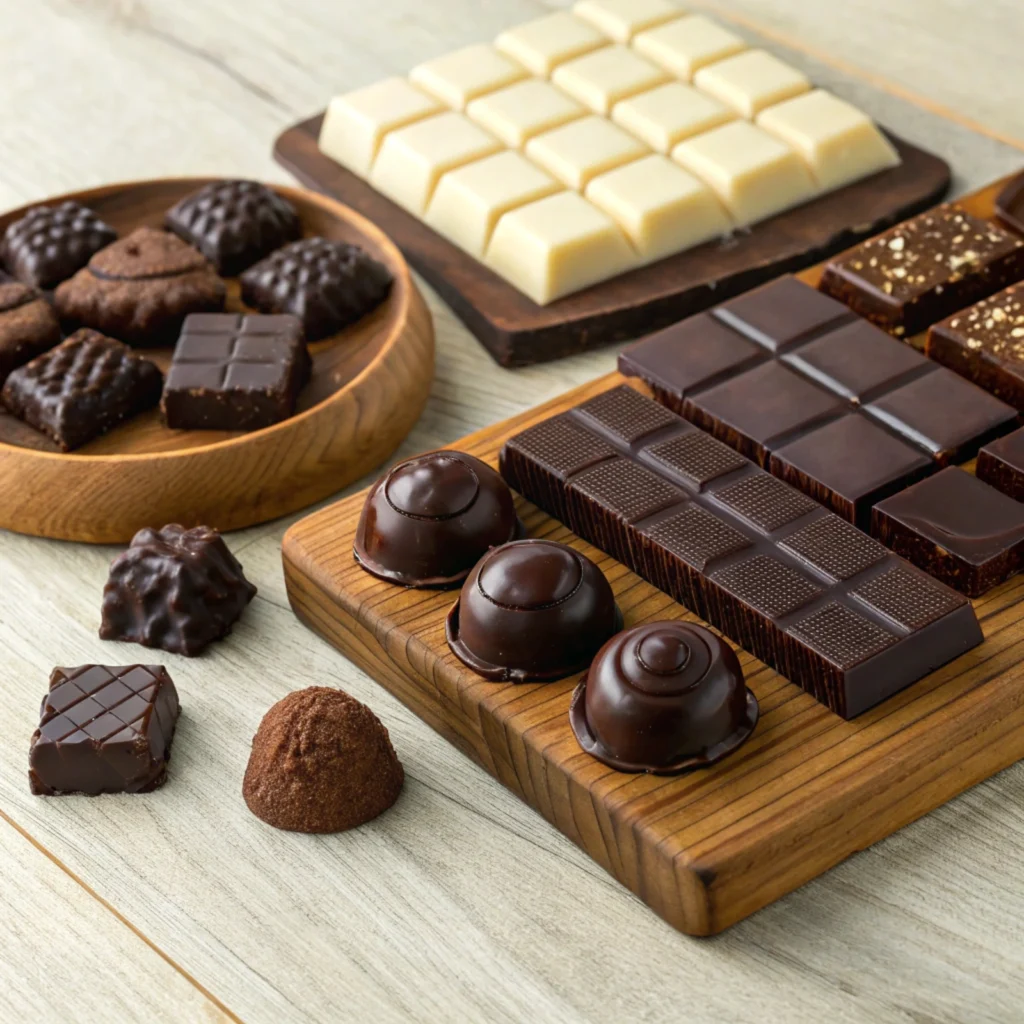
This guide covers all you need to know about dairy-free chocolate. We’ll explore what it is, its benefits, how it’s made, and more. By the end, you’ll meet your sweet tooth with confidence.
What is Dairy-Free Chocolate
Dairy-free chocolate contains no milk or dairy. It uses plant-based ingredients for creaminess. Milk chocolate gets its texture from dairy. Dairy-free options include almond milk, coconut milk, and cocoa butter. These ingredients add extra richness.
This chocolate is great for people with dairy allergies, lactose intolerance, or a vegan diet. It tastes as rich as regular chocolate, but it’s dairy-free.
Benefits of Dairy-Free Chocolate
Health Benefits
Dairy-free chocolate usually has simple, wholesome ingredients. Choose high-quality options like dark chocolate or vegan bars. They are rich in antioxidants, including flavonoids. These compounds support heart health and may boost brain function.
Choosing plant-based chocolate can help you eat less saturated fat. Traditional milk chocolate often has higher levels of these fats.
This makes it a better choice for those who maintain a balanced diet.
Dietary Advantages
Dairy-free chocolate is a great choice for people with dietary restrictions. It works well for people with dairy allergies or lactose intolerance. Many products are gluten-free, nut-free, and free of common allergens. This makes them safe for those with food sensitivities.
Environmental Impact
Choosing dairy-free chocolate supports sustainability. Plant-based chocolate has a smaller environmental impact than milk chocolate. Dairy farming creates a much larger carbon footprint. Vegan chocolate often uses organic ingredients. This promotes green practices.
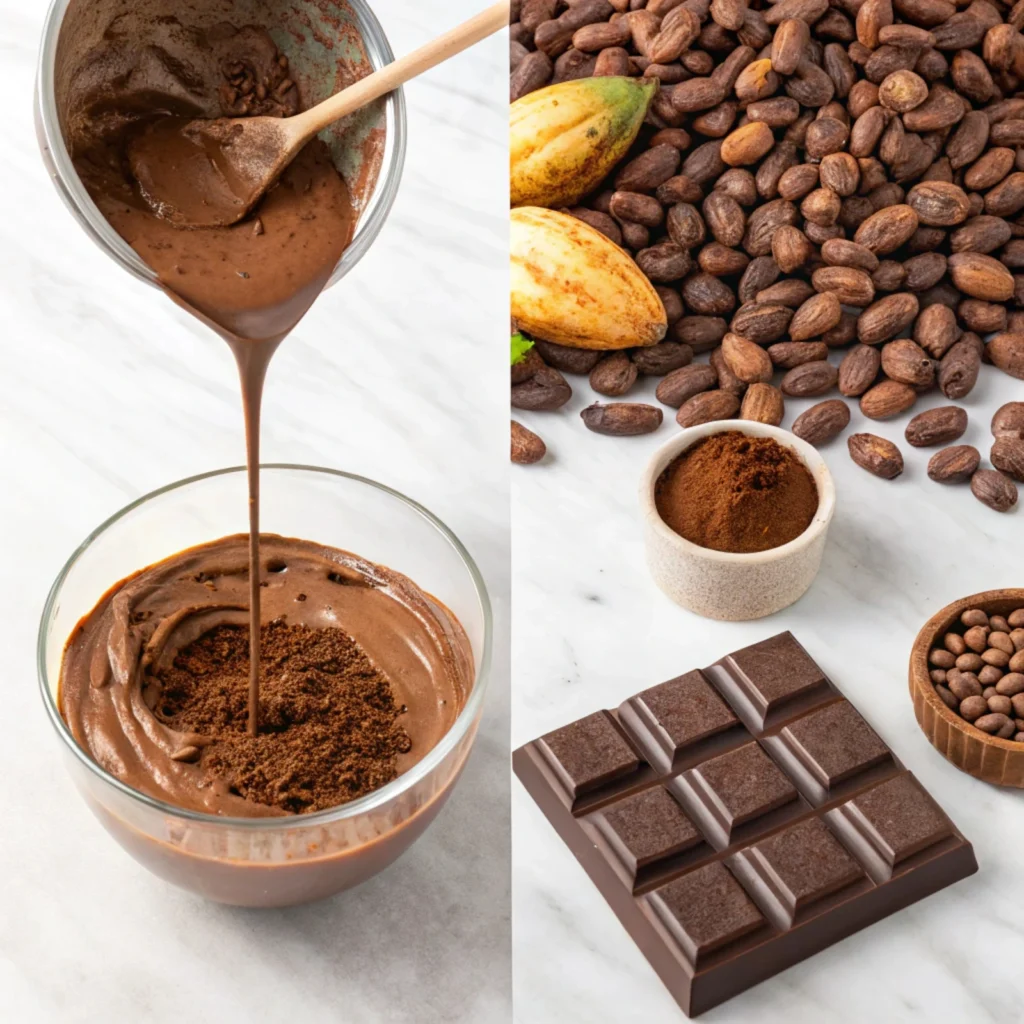
How Manufacturers Make Dairy-Free Chocolate
Key Ingredients
Manufacturers make dairy-free chocolate from cocoa beans, cocoa butter, and sweeteners. These sweeteners can be cane sugar or maple syrup. They often have plant-based choices, such as coconut milk and almond butter. These options boost creaminess.
Some brands choose organic ingredients. They also avoid palm oil to be more green.
Step-by-Step Preparation
- Farmers pluck and ferment cocoa beans. This process gives chocolate its rich flavour.
- Roasting and Grinding: The roasters roast the beans and grind them into a liquid cocoa mix called liquor.
- Mixing: Blend cocoa butter and sweeteners, and plant milk until smooth.
- Tempering: This process melts the chocolate and cools it. It gives a shiny finish and a crisp snap.
- Moulding and Setting: Pour the chocolate mixture into moulds. Let it sit before packaging.
Tips for Tempering Chocolate
Tempering is important for a shiny finish. It also stops chocolate from looking dull. To temper at home, heat dark chocolate to 31-32°C (88-90°F) and white chocolate to 28-30°C (82-86°F). Use a thermometer for precision!
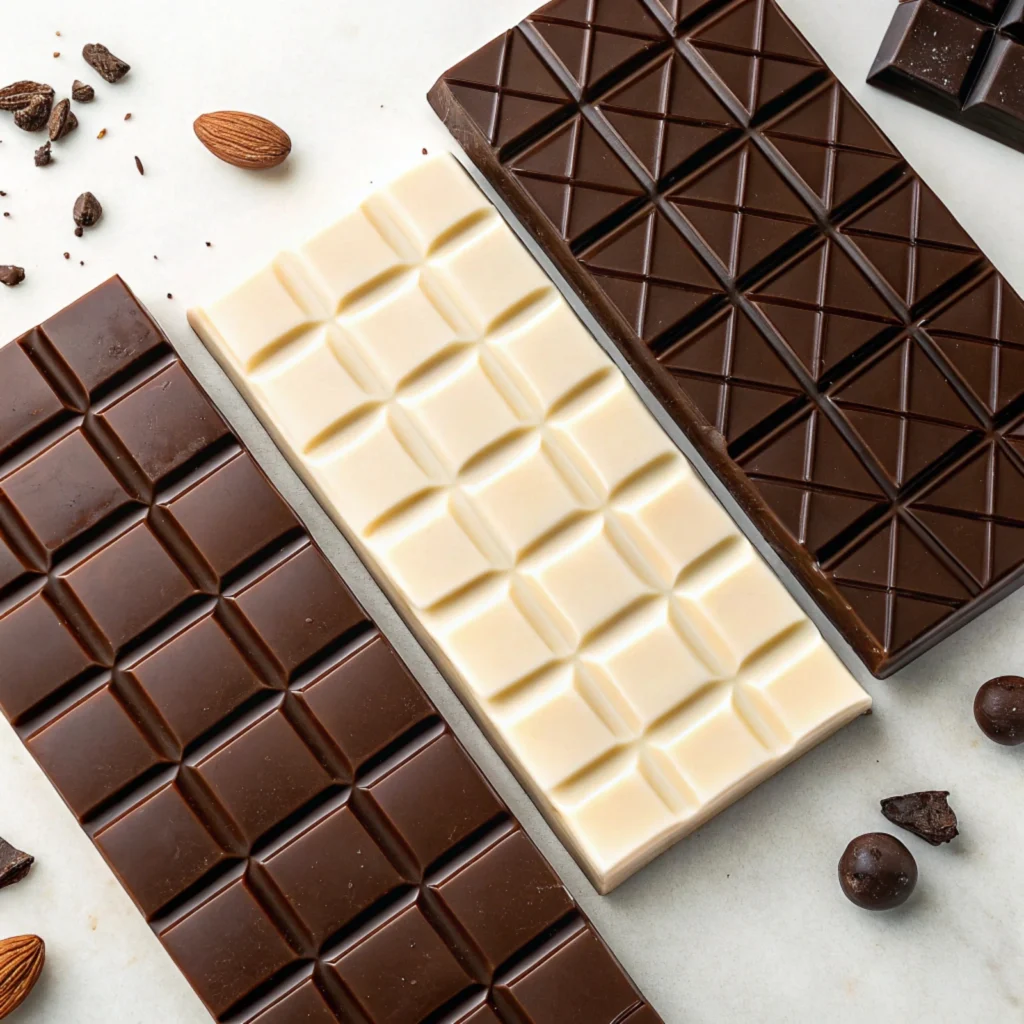
Types of Dairy-Free Chocolate
Dark Chocolate
Dark chocolate contains no dairy by nature. It usually has more cocoa and no milk solids. This makes it the top choice for chocolate lovers who want a bold, intense flavour.
Check ingredient labels for “dairy-free” to avoid cross-contamination.
Vegan Milk Chocolate
Modern vegan milk chocolate is as creamy as regular milk chocolate. It uses plant-based options such as oat or coconut milk. Vegan chocolate bars are popular now for their perfect blend of sweetness and flavour.
White Chocolate Alternatives
White chocolate alternatives use simple ingredients. These are cocoa butter, non-dairy milk, and natural sweeteners. Many brands sell coconut milk chocolate bars. They mimic the rich sweetness of regular milk chocolate but without the dairy.
Serving Suggestions and Variations
Pairing Ideas
Try dairy-free chocolate with fruits such as strawberries, bananas, or dried mango. It makes a tasty snack! You can also melt dark chocolate chips over almond milk ice cream. Or, use them to bake delicious chocolate chip cookies.
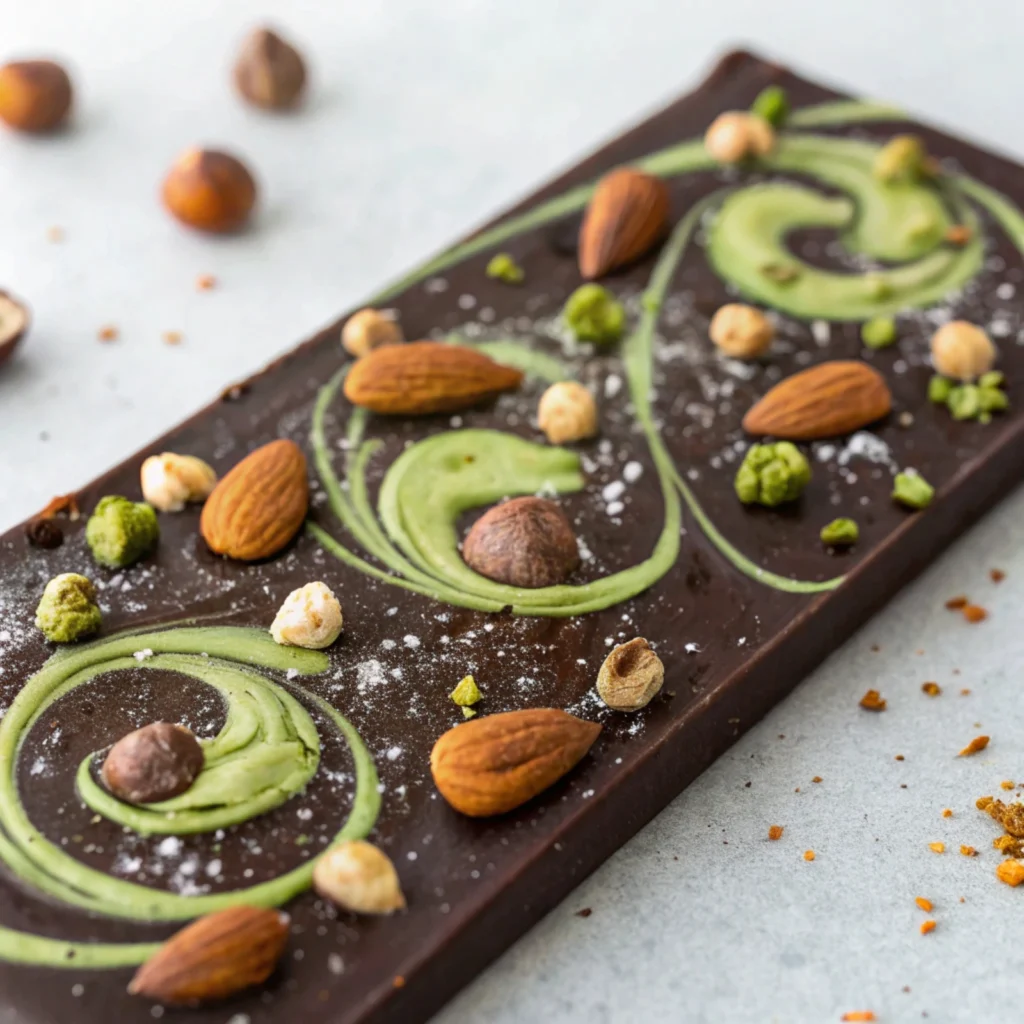
Flavor Variations
Try adding fun twists to your chocolate! Use matcha, orange zest, peppermint extract, or espresso powder. These add-ons are like extra chocolate layers of delight.
Popular Additions and Toppings
Spruce your chocolate with roasted hazelnuts, almond butter swirls, or flaky sea salt. Top with tree nuts or coconut flakes for an extra crunch.
FAQs
Does dairy-free chocolate taste like regular chocolate?
For sure! Dairy-free chocolate has a rich, creamy taste like regular chocolate. Many people find it hard to tell the difference. This is true for both premium cocoa and plant-based ingredients.
Is dairy-free chocolate healthy?
Yes, dairy-free chocolate can be healthy. It’s best when made with simple, natural ingredients and little sugar.
What is vegan chocolate made of?
Vegan chocolate contains cocoa solids, cocoa butter, and sweeteners from plants. Instead of dairy milk, it often uses almond, oat, coconut, or rice milk. These alternatives give a creamy texture while keeping a great flavour.
Can lactose-intolerant people eat vegan chocolate?
Definitely! Vegan chocolate has no dairy. This makes it safe for people who are lactose-intolerant or sensitive to milk. It’s a delicious alternative for anyone avoiding dairy.
Does vegan chocolate melt the same way as regular chocolate?
Yes, vegan chocolate melts like regular chocolate when you heat it. Its melting point can vary a bit. This depends on ingredients like plant-based milk or sweeteners. It’s also versatile for cooking and baking.
Is vegan chocolate more expensive than regular chocolate?
Vegan chocolate may be a little pricier in some instances. It uses all-natural, plant-based ingredients. Vegan brands are usually ethical and sustainable.
Are all dark chocolates vegan?
Not always. You see, a few dark chocolates are dairy-free. Some may contain milk solids, butterfat, or other dairy products. You need to read the ingredient list or seek a certified vegan mark.
Where can I buy vegan chocolate?
You can find vegan chocolate at grocery stores, health food stores, specialty shops, and online. Many brands offer various flavours. You can enjoy classic dark chocolate. You can also discover unique flavours, such as salted caramel and orange chocolate.
Is vegan chocolate suitable for people with nut allergies?
It depends on the brand. Some companies make vegan chocolates. They do this without using nuts in their facilities. They mark them as nut-free in a way that leaves no doubt. Some products might contain nuts, or factories might process them in places that handle nuts.
Shelf Life and Storage Tips
Keep your dairy-free chocolate in an airtight container. Store it at room temperature. Please keep it away from heat and moisture to maintain its taste and texture. If stored with care, most chocolates remain fresh for several months.
Understanding the Market
Why Some Avoid Dairy
For many, avoiding dairy is about health, ethics, or sustainability. People often choose this diet for several reasons. This includes lactose intolerance, vegan diets, and concerns about the environment.
Where to Buy Dairy-Free Chocolate
You can get dairy-free chocolate at health stores, vegan shops, or online on Amazon. Check for brands that offer plant-based chocolate. Ensure that their ingredient labels are visible.
Expert Insights
Chocolatiers say the trend for plant-based chocolate is here to stay. Vegan chocolate recipes and new dairy-free bars help people enjoy chocolate correctly.
Exploring More Dairy-Free Desserts
Why stop at chocolate bars? Consider using the dairy-free chocolate in recipes like fondue, mousse, or a scrumptious cheesecake. Match your taste buds, and they will be grateful in return!
Dairy-Free Chocolate
Course: Dessert / SnackCuisine: Vegan, Dairy-Free8-10 pieces
servings10
minutes100
kcal1
hourThis dairy-free chocolate recipe is simple and tasty. You can make it at home with little effort. With a few wholesome ingredients, you’ll create rich, smooth chocolate. It’s great for snacking, gifting, or using in your favourite desserts.
Ingredients
1/2 cup cocoa powder (unsweetened)
1/4 cup melted coconut oil
1/4 cup maple syrup (sweetener substitute)
1/2 teaspoon vanilla extract (optional)
A pinch of sea salt
Instructions
- Measure and prepare all the ingredients for use. Melt the coconut oil if it’s solid.
- Mix the powdered cocoa and dissolved coconut oil in the bowl of a mixer till smooth.
- Add the maple syrup, vanilla extract (if using), and a pinch of sea salt. Whisk the mixture until it’s well combined and glossy.
- Pour the chocolate mix into silicone moulds, a lined baking dish, or an ice cube tray to shape.
- Put the moulds or tray in the fridge for 1-2 hours. Wait until the chocolate is set.
- Pop the chocolates from the moulds. Then, enjoy your homemade dairy-free treat! Store leftovers in the refrigerator to prevent melting.
Notes
- For best results, use high-quality cocoa powder and coconut oil to achieve a rich and smooth texture in the chocolate.

